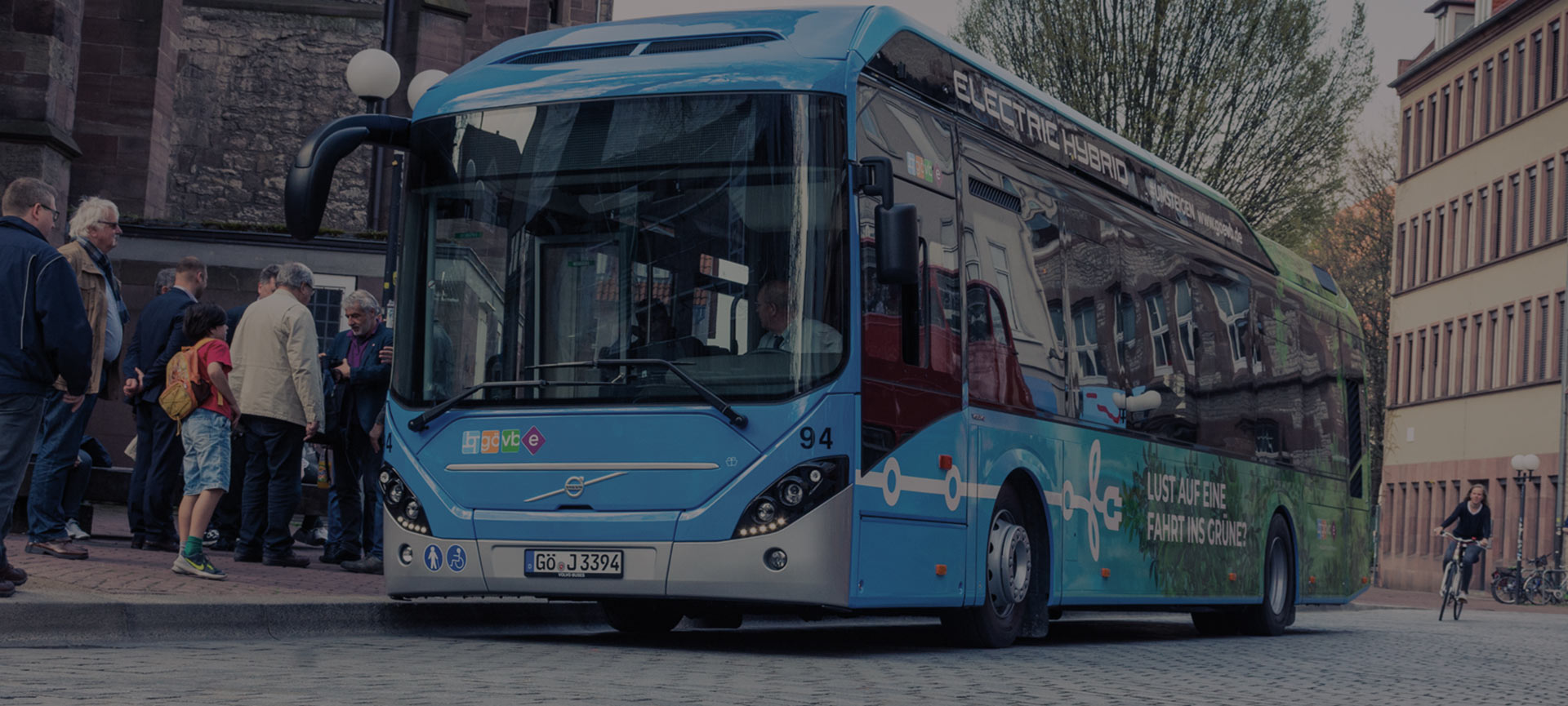In order to provide its citizens with attractive mobility services, the City of Göttingen defines the basic conditions and guidelines for future-oriented public transport every five years.

Local Transit Plan for Göttingen
Taking the city’s particular circumstances into account, the PTV Transport Consult team helps plan Göttingen’s local transit so that it is sustainable and fit for the future.
The key task of the PTV experts was to create a new requirements profile for public transport and adapt it to future challenges. In this context, they focused on enhancing the city's line network while taking into account structural changes and a series of decisions about climate protection and urban development. Another important aspect of the local transit plan was to make public transport accessible to people with disabilities.

-
Transport model as the basis for planning
-
For the planning work, the PTV consultants created a transport model in PTV Visum. This model included not only current public transport options, but also extensive structural data and planned development and industrial areas.
-
Creation of requirements profile
-
The experts were able to derive some parts of the requirements profile from the existing local transit plan. Here, it was important to ensure equivalent service in different areas based on their respective spatial structure and usage. To achieve this, future transport demand was forecast.
The consultants examined the different urban areas in terms of accessibility and level of service based on a weak point analysis, using reference values from the requirements profile. The connection of newly constructed areas and attractive public transport services for students to university locations played an important role.
-
Accessibility
-
Accessibility was another major factor that had to be included in the new local transport plan. In addition, new federal and local legal requirements had to be fulfilled.
In order to make the system more accessible, the PTV consultants divided up the city’s stops into categories according to ridership, their position at important facilities, and their significance as transfer stops. Then, the team prioritized them according to their expansion state. The PTV team also defined extensive features required to ensure accessibility, covering various areas, such as stops, vehicles, personnel, information, service etc.
-
Cost and passenger development
-
Another task of the PTV Transport Consult team was to identify how an extensive increase in service frequency would affect cost and ridership.
The analysis revealed that passengers could be gained and, in some areas, potential exploited. However, without accompanying measures in motorized private transport, the public transport portion of the entire modal split would only increase by two percentage points, which would not make the increase in service frequency profitable.
-
Participatory process
-
In addition to enhancing the local transport plan, the PTV consultants implemented extensive participation offerings with events for the project council (political groups and interest groups) and the passenger council. The new local council members in the urban area participated in two events.
-
Final local transport plan
-
Göttingen’s city council passed the new local transport plan in September 2019; you can access it on the city's homepage.
PTV Transport Consult was also entrusted with the detailed planning of the defined test runs (primarily connection measures).
